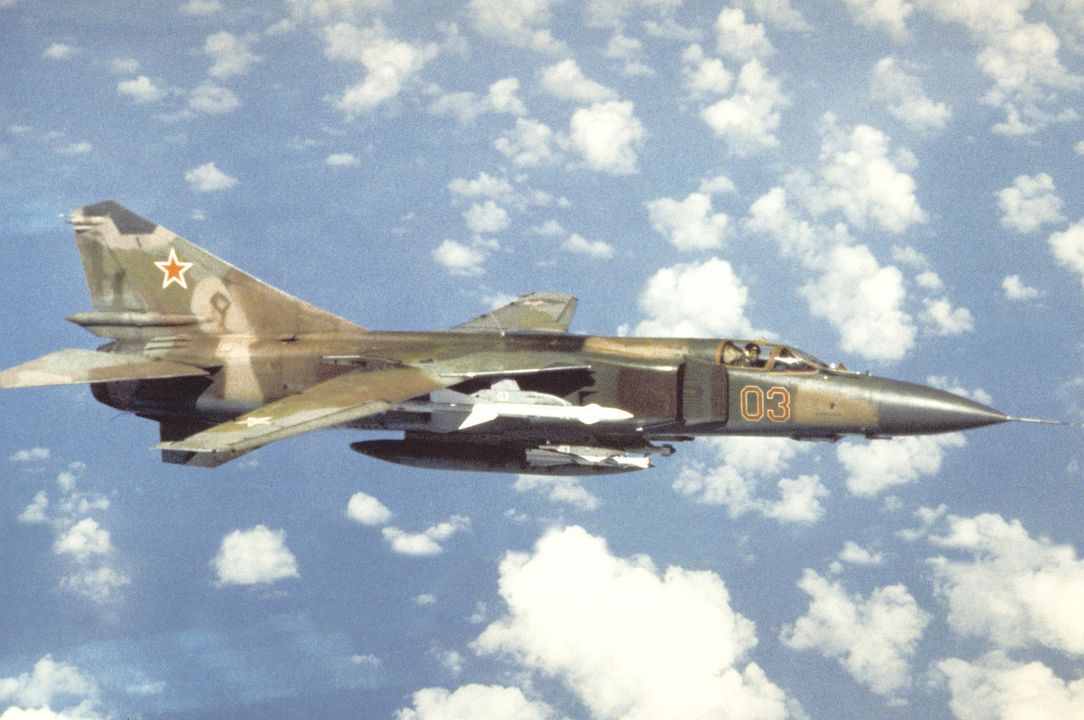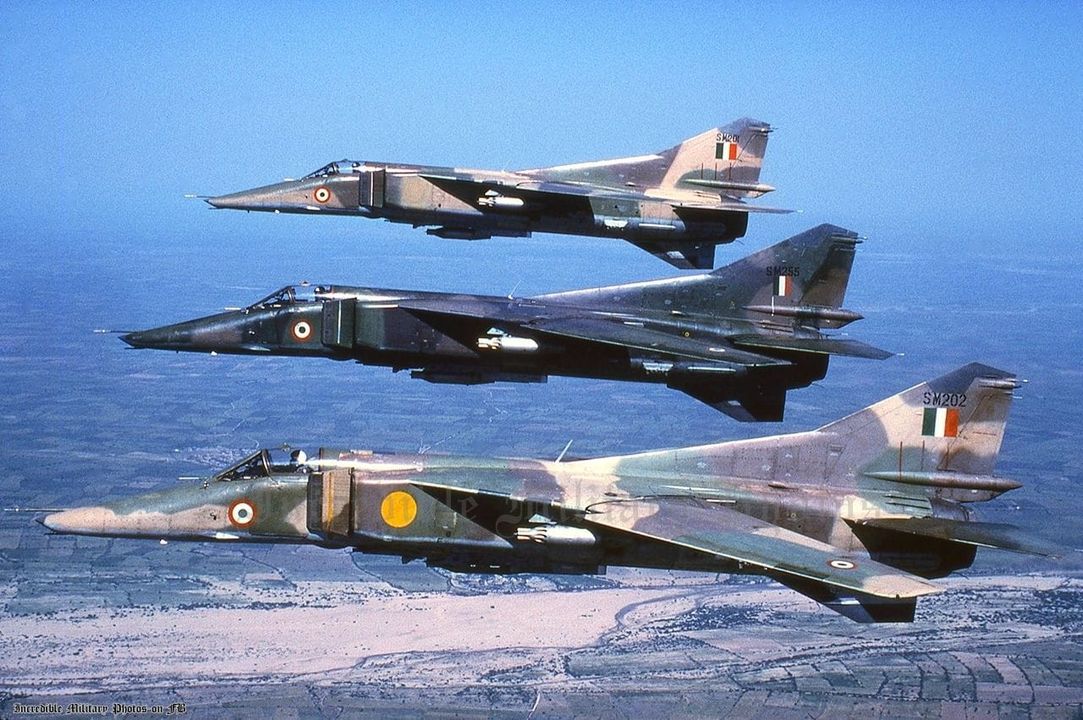MiG-23 “Flogger”: The Black Sheep of the MiG Family

Every family has a black sheep, and for the MiG family, it is the MiG-23 “Flogger”.
Development and Initial Reception
First taking flight in June 1967, the MiG-23 was developed in response to “heavy” American fighters such as the F-4 Phantom. For a lot of Soviet-friendly countries such as Syria and Egypt, having a supersonic fighter that could tangle with the F-4 (like the ones used by a certain Jewish state) and be a replacement for the venerable MiG-21 sounded like a dream come true. But unfortunately, the MiG-23 was anything but a game changer.
Now if there is one thing you should know, it is that the Soviet Union was notorious for exporting “Monkey” versions of their equipment. Basically, these were vehicles and/or aircraft that were nowhere near as good as those retained by the USSR, and the MiG-23 (specifically, the MiG-23MS) was the most notorious example of this.
The Notorious MiG-23MS Variant

The MiG-23MS was basically a downgraded version of the MiG-23M and was usually sold to countries Moscow didn’t fully trust. Designed specifically for customers in the Third World, the MS variant didn’t have the advanced tech used in the MiG-23MF. While they did have the same airframe and engine, the MS had been fitted with a dumbed-down version of the RP-22SM radar (which gave it a shorter nose than the MF). This resulted in the aircraft only being capable of firing up to four R-3S and R-3R air-to-air missiles. Not particularly good when you consider these were short- to medium-ranged missiles based on the American-made AIM-9, whose early versions were not all that great.
Maintenance and Performance Issues
Also, the MiG-23 was an absolute maintenance hog when compared to the MiG-21. The Tumansky R-27-300 engine it used was not the most reliable and was well known for needing constant replacing due to burning out rather quickly. As for performance, it was fast but was only safe to fly in a straight line. The Flogger was an absolute pig to fly, and that is not just my opinion; many pilots have said it was a tricky jet to control. This was supposed to be a fighter that could take on the F-4, but it could not enter a dogfight without potentially losing control and killing its pilot.
Legacy of the MiG-23

Needless to say, some countries ended up keeping their older MiG-21s and would only order small numbers of the MiG-23 type. Though to be fair, the MiG-23 did eventually evolve into the MiG-27 ground-attack aircraft, which was a pretty decent aircraft but was not as heavily exported—probably because the Su-25 already existed.
~NC










